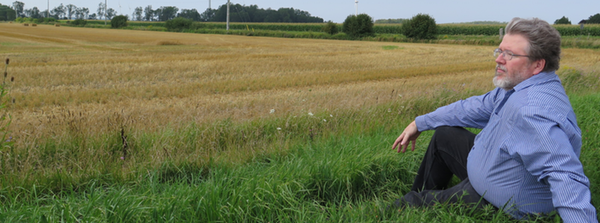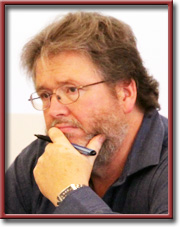Transitions, Transections, Transfictions
“What parts of your day offer you the possibility of a tiny hiatus; unused time to pull over, stop, look around? In your ecumene, where do things past drift past use and awareness to the corners of household, social or industrial geographies: surplus, uncollected, collected only for disposal? The image of the car isn’t a great shot: I took it with a phone, cropped it, but it still didn’t say much to me. But when I brushed aside aesthetic concerns and the insignificance of the subject, I suddenly saw the fence and brush as figure, not ground—not as obstructions to the view of the car, but as screens adding patterns of regularity and disruption to its styled lines and slow decay.”—William Ramp
Small Things Recollected
By Dr. William Ramp
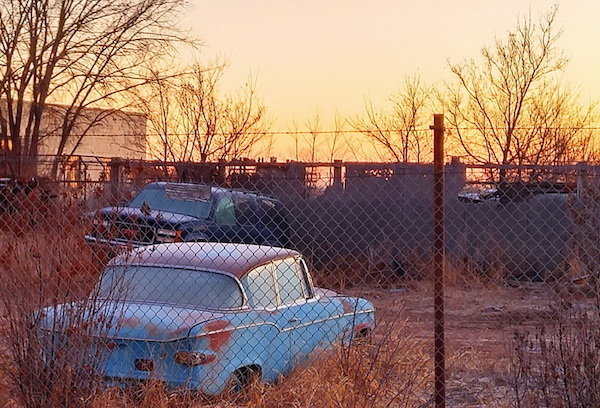
“Ideas are to objects as constellations are to stars.”—Walter Benjamin, translated from Trauerspiel, 1928.
LETHBRIDGE, ALBERTA Canada—(Weekly Hubris)—June 2019—This is the last instalment—for now—of my meditations on photographs and other documents of everyday life. I’ve not run out of material, but I suspect that by next month, I’ll need to return to words, for reasons personal and public.
In the past three columns, I’ve discussed a variety of ordinary images and documents, most from my own family, some preserved carefully, others stored away with only fragmentary information to identify them. Sometimes, preservation can be a more benevolent form of destruction; for example, if elders who keep and intend to add narratives to them run out of time at the end of life, or have no one to receive them. I wanted to show how undocumented or out-of-order images could still offer opportunities to make meaning. I’ve tried to show how that could be done, and I also invited readers to co-participate.
But I was dogged by a demon all along. Two columns ago, I wrote a long methodological apologia that I fear may have put readers off before they ever reached the images and the stories—all because a scornful colleague had taken up residence in the back of my head, repeating “he just pulls this stuff out of his ass.”
There were other misgivings: did my interpretations circle too close to my own interiority? Did I lay too heavy an explanatory hand on some images, contradicting my expressed wish that readers engage directly with them? In that methodological detour, I advised attending to what first strikes us, unbidden, about an image; addressing that without rationalizing it away. I think I modelled that process pretty well in some instances but imputed too much, too didactically in others. I turned one photo of a boy standing next to a stag on a roadside into a riff about the city of London, Ontario. A month later, deeper into the box from which that image came, I came across another of the same scene. On the back of this one was a note: “Algonquin Park, people unknown.” It had been taken in a wilderness park 260 miles from London. No matter: I could spin you a tale of that place, too.
Let me circle these issues once more, very briefly, I promise. There are two figures who’ve hovered over this project. One is Walter Benjamin who argued in the 1920s and 30s that photographic images could provide a way into what he called a “social unconscious.” Forty years later, in his posthumously-published Camera Lucida, Roland Barthes took up Benjamin’s brief allusion to a “tiny spark of accident” in looking at photographs to suggest that we encounter images in two different ways. One, called studium, is about placing the image: making it meaningful by associating it with a personal, familial, cultural, or academic matrix, sometimes in polite complacency (“that’s nice”), sometimes through focused mental activity: analysis, interpretation, classification.
But an image can also strike us in ways that disconcert, evoke unexpected emotion, undo explanation, undo us, even if only for a microsecond. This movement, this moment, Barthes called punctum, and I want to focus on it.
Barthes’s distinction between studium and punctum is much-discussed, sometimes critically. It’s said he steeped punctum, as an occasion for emotional experience and expression, in too much melancholy and nostalgia, too much self-involvement. Reviewing Camera Lucida in 1981, Andy Grundberg wrote:
. . . one suspects a more personal motive . . . Barthes writes of his “’uneasiness” at being “torn between two languages, one expressive, the other critical,” of his “ultimate dissatisfaction” with the critical discourses of “sociology, of semiology, and of psychoanalysis,” and of his “desperate resistance to any reductive system.” Seen in relation to “The Pleasure of the Text,” his reflections on photography merely confirm his growing disaffection with semiotics and his decision to use his own emotions as a prime source of insight.
I’m with Grundberg to this point. But he goes on to say that, in Barthes’ hands “[t]he studium and the punctum, tied as they are to the subjective reactions of individual viewers, are not supple tools for analytic reasoning; rather, they are the last links in a chain of reductive thinking,” and further, that Barthes’ emphasis on the poignancy of photographs, their evocation of what-has-been and what is lost, means that “the essence of the photograph is found in death, it leads only to a dead end.” I suppose a similar criticism could be made of Emily Dickinson.

135
By Emily Dickinson
Water, is taught by thirst.
Land—by the Oceans passed.
Transport—by throe—
Peace—by its battles told—
Love, by Memorial Mold—
Birds, by the Snow.
Dickinson knew about poignancy, loss, and death, and certainly about self-isolation. And certainly she frustrated friends and family who sought to force her out, at least as far as the parlour! One can imagine their frustrated response to that face, iconic to us now, but calling forth from them the 19th-century equivalent of “Oh, come on!”
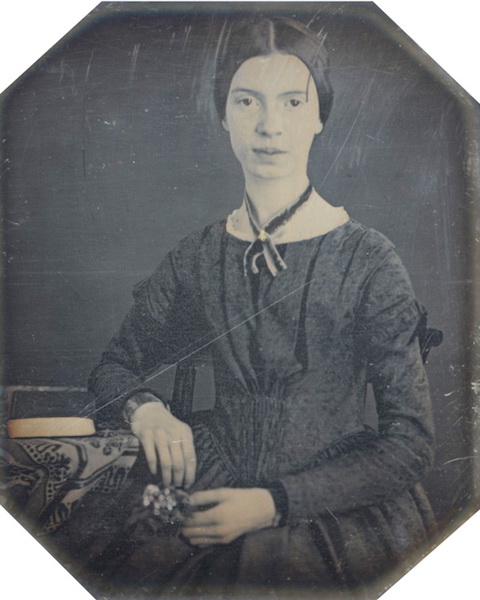
Fair enough. But we are subjects, and we are creatures defined by loss—and analytic abstraction does always do some violence to that lived reality. More importantly, as subjects we also relate to each other through shared ideas and emotions. I differ from Grundberg (and maybe from Barthes) in insisting that the personal, the subjective, the emotional are not trapped in a container called the self or the subjective but are socially-formed, socially-embodied and shared. When I’m subjectively, personally affected by some accidental encounter with an image that, in Barthes’ words, “pricks me (but also bruises me, is poignant to me),” I can explore that moment as formed in a wider context. The “me” that is affected is also a we, formed in relation to theys and existing in a specific now.
Thus does punctum traverse into studium, whether complacent, nostalgic or critical. As a response to punctum, studium is an active and mutual implication of viewer and viewed, not in a void but in a culture, in social and institutional relations, through technologies, in a history that includes the right now. My response does not have to begin and end with “me alone.”
If you read something by me and think to yourself, “too introverted,” and put it aside, what I wrote still did work on you; it called out a response in you that came not just from your personal tastes and psychology but also from how you have been socially formed as a thinking, perceiving, and emoting subject. Your self-formation is contingent, and political, just as is mine, and that is potentially interesting, and not just to you or me individually. The essential point of psychoanalysis, which informed so much of what Benjamin and Barthes wrote, and what I write, is that solipsism is a cognitive mistake. The distinctions between personal and political, individual and social, are themselves socially-situated, have a history, and are political. Barthes’ response to images may or may not be politically helpful, but it is never not political. It may be self-absorbed, but to be self-absorbed is a relational act (albeit one that denies relation).
It’s important, too, to remember that punctum isn’t a quality inherent in a given image. Nor do we have the same response to an image every time. Punctum is a singular event, a starting-point for reflection or action. You can seize it, or pass. It may or may not return.
Once again, as you look at the following images and read my words, attend to the ones that prick you, and to how they do so. You may identify with some, or you may fight my choices, my interpretation, my imputations, my signals. Either way, your response is already, in its first millisecond of detonation, a complex relational act between you, the text or image, the subjects represented in them, me, and voices from your own formation that have been incorporated into the “you” that initiates “your own” response. Explore these. How do they work in other parts of your life; in the ways you identify with others or refuse to identify with them?
In the tiniest and most insignificant encounters, in the most discarded and discardable things, lie the myriad effects of a giant politics of significance, of social formation, of contradiction, of slow or fast disintegration and reintegration of meaning. And of self-formation, of self-undoing, of diversion, or of avoidance.
Have you been in a moment of confrontation when you knew that whatever relation you had with someone was over or had become something monstrously different—and some idiot song was playing in the background and it lodged in your head? Perhaps you can’t remember the exact and devastating words said or exactly what was done, but you recall some picture on the wall, a lamp, a stippled ceiling, a pattern of upholstery on a chair, a tic starting in your face or a limb. The aftermath of punctum may be flight, erasure or rejection. Alternatively, it may incite studium, trivializing, critical or desperate, perhaps interrupted again by punctum. Diversion interweaves with recollection or repetition. “What the hell?” we ask.
Or perhaps you’ve been undone, once or twice, by an encounter that opens you, by way of some small, small thing, to all heaven in a single, fleeting moment.
On, then, to this month’s small things.
![]()
Dreams, actualities
Let’s start with the photo of the old car in the automobile graveyard above. It’s a 1959 or 60 Studebaker Lark. It sold well in the stodgy, respectable universe of White Canada before the social, cultural and technological eruptions that ended the postwar social compact. It was built in Canada, was cheap and economical to run, and reliable. A Ford, Chevrolet, or Plymouth gave you more steel for the money, but this was a sensible car. It had a bit of style, but didn’t flaunt fins, bullet-shaped taillights or weaponized hood ornaments. Just that little kick-up in the chrome strip, the reverse-angled border of the rear passenger window, and here, the once sky-blue paint. Studebakers are no longer made, not in Canada, not anywhere; victims of the merciless competition that brought us monopolies and oligopolies; companies now “too big to fail.”
But the legacy of The Car is still with us—in blighted neighborhoods transected by expressways, in petropolitics and petrostates, in Middle Eastern wars past and future, in the mourning and exhaustion that encloses the families of those killed, maimed and disabled by vehicles. Their numbers in any given year far surpass the numbers killed on 9/11.
Alternatively, a kitsch artist could spot this car and transpose it from the wrecking yard to a 1950s A&W drive-in, filled with happy teens.
What parts of your day offer you the possibility of a tiny hiatus; unused time to pull over to the side of a road, stop, look around? In your ecumene, where do things past drift past use and awareness to the corners of household, social or industrial geographies: surplus, uncollected, collected only for disposal? The image of the car isn’t a great shot: I took it with a phone, cropped it, but it still didn’t say much to me. But when I brushed aside aesthetic concerns and the insignificance of the subject, I suddenly saw the fence and brush as figure, not ground—not as obstructions to the view of the car, but as screens adding patterns of regularity and disruption to its styled lines and slow decay. The fence speaks of property and safety. The brush refuses to accede to my selective vision, to the dream-lines of the dead car, and to the gridded domination of transportation corridors.
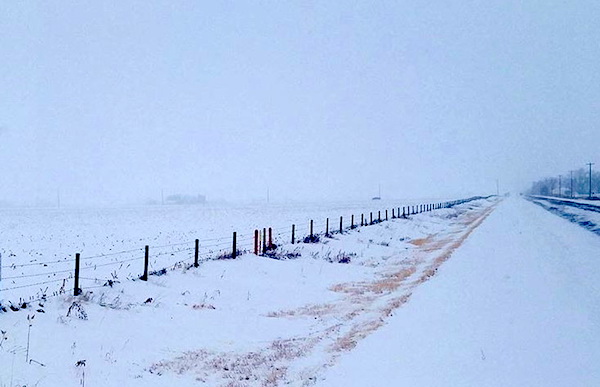
From the window of a stopped car, this landscape becomes a framed artwork. I am in it, but in the car, not of it. The car makes us not merely drivers and passengers, but also viewers. It frames landscapes and images of consumption and of confrontation. It takes us places (as Henry Ford once said, responding to objections to the spread of the car by John Burroughs, an early Naturalist). But it also distances us, as viewers, from the places it takes us to. I didn’t have to enter this landscape, its sovereign cold, to take its picture. I simply wound down the window, pointed my phone, rolled the window up again. Photo obtained.
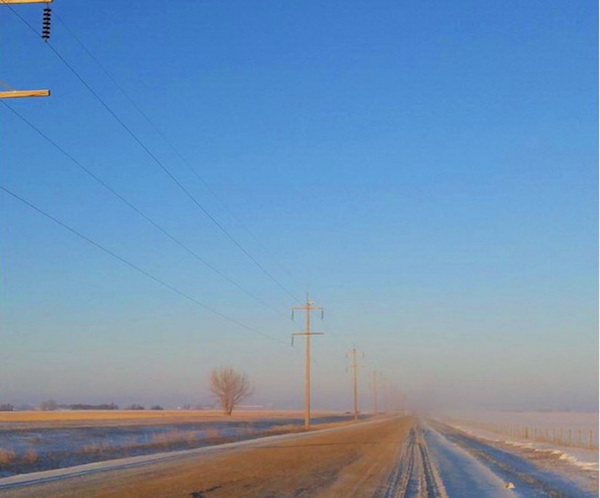
The temperature has dried the road and surrounding tilled fields, allowing a haze of soil to rise with the wind. An arctic dust storm! My fingers register the cold as pain. I remember that, looking at the image, and think, “What if the car, at that moment, had broken down?”
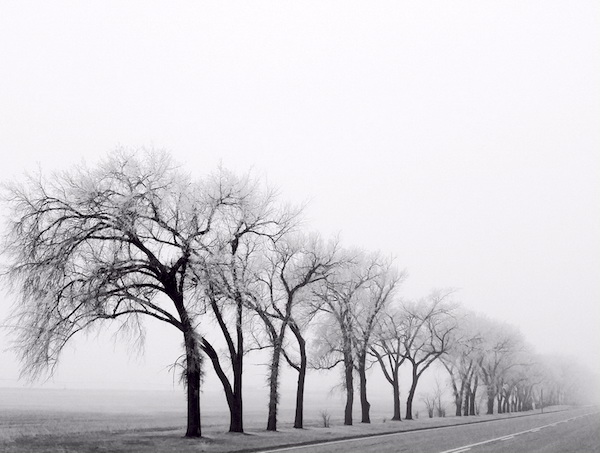
An irony here: Jail Road is named for a provincial correctional institution. Its grounds, and the roadside frontage, are planted, ordered, and immaculately kept, a dreamscape that belies the realities of incarcerated and institutionally-ordered lives. A dreamscape like this beautiful row of trees on a glum hoarfrost morning.
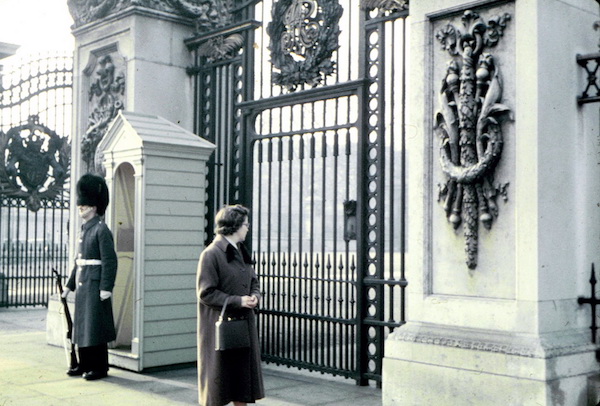
In the winter of 1959, she took the only holiday she had, sans children, for a quarter century. Here, in London, she gazes through the closed gates of Buckingham Palace. For us, her children, the children of the Queen became a kind of parallel family—mythical cousins, as real as the press photographs that made them intimate, more real to us than the strategy of identification that packaged and sold the family incarcerated within the gates, and the order they headed, its class and imperial politics excised. Who was incarcerated by these gates, though? Which side is shut in? Which is shut out? One? Both?
![]()
Persons, places, things, codes
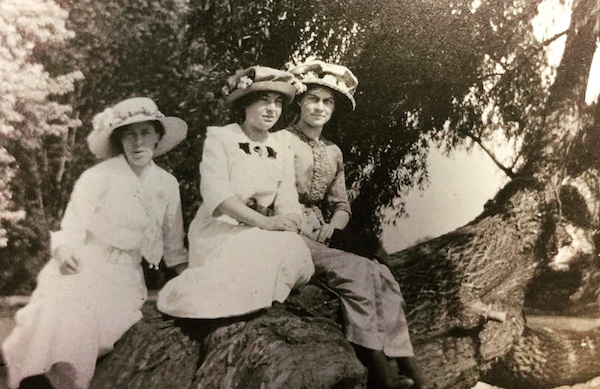
What was it that led so many Edwardian middle-class women, dressed in those voluminous skirts and blouses, to perch in trees for the camera? What coding of nature, culture, gender, what recognition, was injected through the prick of a punctum sharpened by this juxtaposition? In Canada, the Edwardian era gave birth to the first flourish of Naturalism, at the very height of settler clearance and the taming of the land. The iconic status in Canada of wilderness painting by the so-called Group of Seven depended on railways, which brought the painters to the front lines of cut lines and mining.
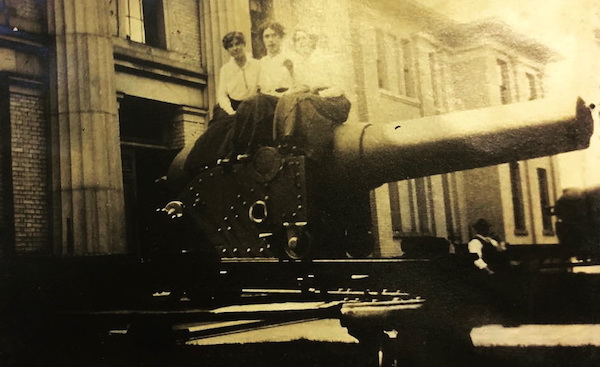
Victory! But it is the women across the Atlantic who surmount this captured and imported monster. Not the soldier-protectors who took it bravely in propaganda and were targeted by it in actuality. What does their perch signify for them? For you?
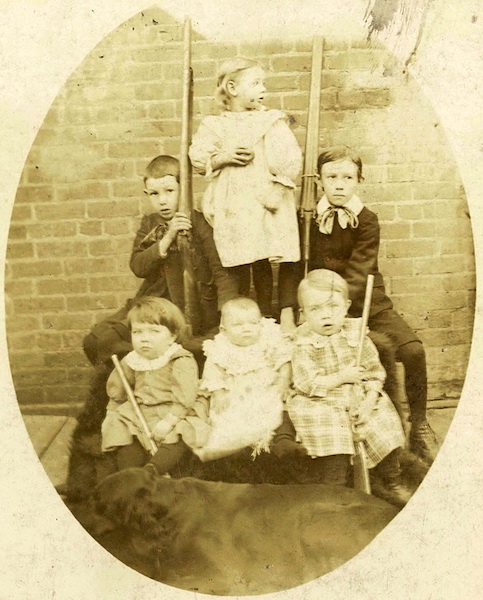
Troubled, and troubling: children of the imperium . . . .
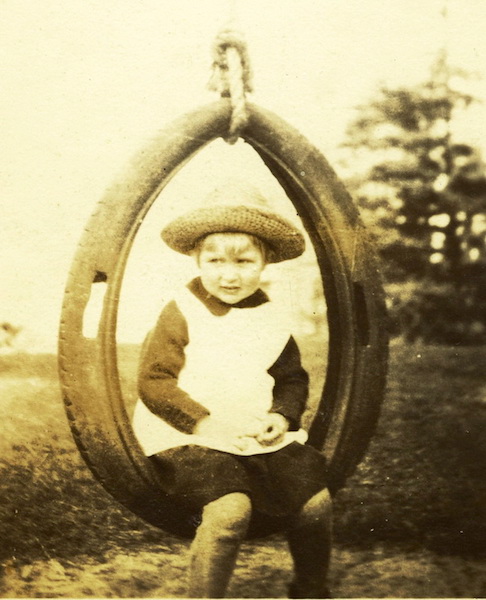
I see first the way the noosed tire frames her, its two hand-holds thoughtfully carved out of hard cord and rubber; her rustic straw hat. Then, the thick and probably itchy stockings; the pinafore; her expression.
Is she squinting at the sun’s glare? Responding warily to an adult’s posing instructions? Does she sense something taken away for the future, pulled from the drowsing buzz of cicadas, the butterfly whisper of air in the heat of high summer in 1932, only the fourth she had ever known?
No, I am imputing my own childhood summers. Though I lived my summers in the same place, that place, that one point, now on Google Maps, it has been shaped and bulldozed almost beyond recognition. Its summers have altered ominously; its vegetation and fauna changing and proliferating in response to elevated CO2 levels; its sand wet with increased humidity. The sound of a highway intrudes. People have made money from it.
I respond as an adult, for whom moments such as the one depicted have evaporated; their recalled experience quickly spiraling, like the scent of volatile compounds, into nothing. I respond both in identification and distancing, a child-who-was and is no more, headlong in flight toward death. I saw the adult this child became. I know the cares and fears and limits she faced. I have heard her recall moments like the one imaged here, holding them in the telling, knowing they were gone. Yet they spark moments like this, in which I pause from what I am doing.
What is that pause? It’s useless; it gets nothing done, it renders no material or status reward. It makes no difference to the future, to the well-being of others. “It’s a nice picture.” So what?
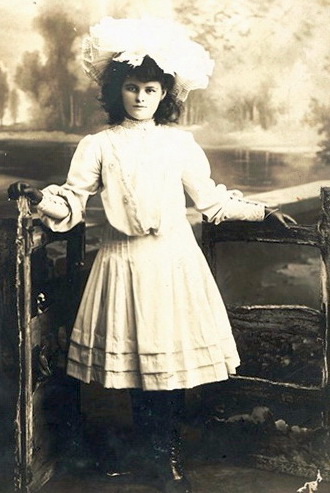
This is Miss Jean Christie Cowie Strachan, all snapping dark eyes, luxuriant hair, and polished black boots beneath a blinding confection of Edwardian headgear and frills. Perhaps she knows her power, its shape and limits, already. She stands for this portrait at the Tesla(!) Studios, George Street, Sydney, New South Wales, in about 1905. She levels her gaze at the camera lens but, for the viewer a century later, she looks out at her still-open future, a future now but a receding page in a family history.
She had a good run, married a man comfortably wealthy but un-ostentatious, had a daughter of her own, outlasted all her siblings.
At the time this photo was taken, that great experiment in continental settler nationalism, the Commonwealth of Australia, was a mere five years old. It would be a decade before it would be shaped in blood and myth on the beaches of Gallipoli. Some of the people the settlers then called blackfellows still lived free lives in what, then as now, was called the bush, though encroached upon by farms, sheep stations, mines, prospectors, and speculative adventurers of all kinds. But in the leafy suburbs of Sydney and Melbourne, the mores and worldview of middle-class White Australia were taking genteel root, along with imported shrubs and landscaping that surrounded roomy two-story homes—a tamed urban pastoral, here echoed in the studio background props.
Decades after copies of this photo were picked up and propped on pianos, in cities such as Sydney and in families such as Jean’s, there would still be general excitement at the arrival in vast harbors of ships bearing the designation RMS, especially at Christmas and New Year’s. The Sydney General Post Office would ready itself for a mountain of overseas newspapers and magazines destined for newsstands, and missives from other settler dominions and from what was still imagined as late as the 1950s as their mutual imperial ‘Home.’ One of these ships carried this portrait to cousins in Canada.
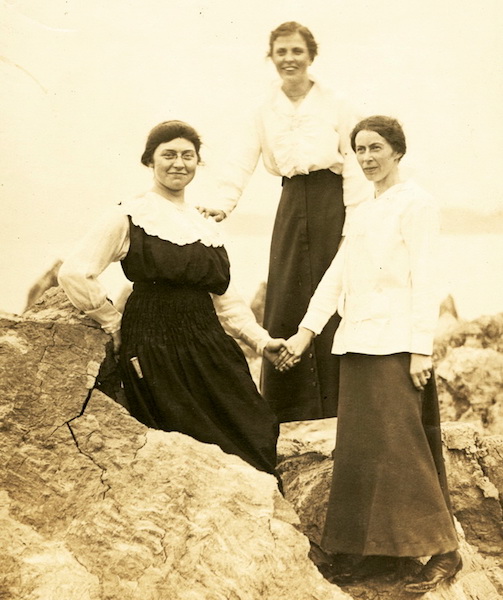
. . . when you look at a photo taken a century ago, and your daughter grins back at you, what vast, tangled reservoir of truisms from two centuries of popular biology, about breeding and bloodlines, rises, like Frankenstein, from the table on which the photos are spread?
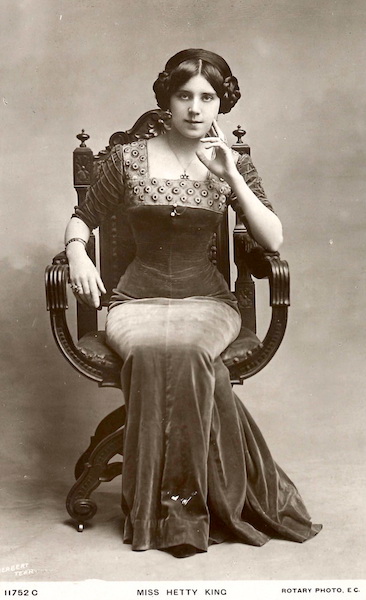
“Miss Hetty King,” printed on penny-postcard stock, was an unusual found-in amongst a stack of old photos kept by a particularly Victorian family. This is a professional shot; a century-old example of fan-photo bling. I was surprised to Google her and find she was very long-lived, and significant enough to theatre history to merit her own Wikipedia page. She even had a late-life filmography. Her forte was male impersonation, and today, that might lend her to a history of gender fluidity that dared not speak its name. But which upright relative might have frequented a music hall to hear her? What passion moved them to come away with and keep her picture?
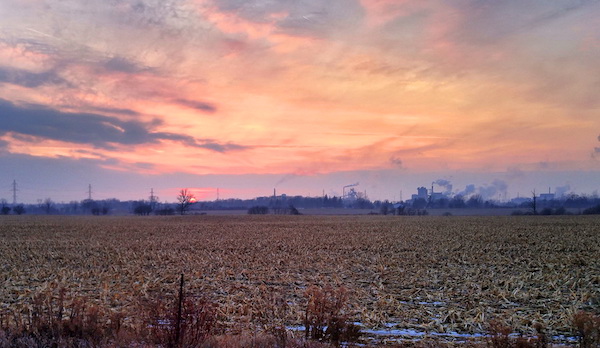
Bucolic (adj.) “pastoral, relating to country life or the affairs and occupations of a shepherd,” 1610s; earlier bucolical (1520s), from Latin bucolicus; in turn from Greek boukolikos “pastoral, rustic” derived from boukolos “cowherd, herdsman,” from the root bous “cow.” Ultimately from the proto-indo european root *gwou– “ox, bull, cow”) and -kolos “tending.” Related to Latin colere “to till (the ground), cultivate, dwell, inhabit” (from proto-Indo-European root *kwel-, “revolve, move round; sojourn, dwell.”
Industry (n.) late 15c., “cleverness, skill,” from Old French industrie “activity; aptitude, experience” (14c.) or directly from Latin industria “diligence, activity, zeal,” noun use of fem. of industrius “active, diligent,” from early Latin indostruus “diligent,” from indu “in, within” (from proto-indo european *endo-, extended form of root *en “in”) + stem of struere “to build” (from proto-indo european root *stere- “to spread”). The meaning “habitual diligence, effort” is from 1530s; that of “systematic work” is from 1610s. The sense “a particular trade or manufacture” is first recorded 1560s.
Both bucolic foreground and industrial background are products of systematic work. It is the setting sun, and the cultural heritage of nineteenth-century Romanticism in the arts, that blends them, softening the contrast. Perhaps punctum strikes here, on second look.
![]()
Passages, candid and vulnerable

A late-campaign, unscripted moment, the outcome to come hanging in the air.
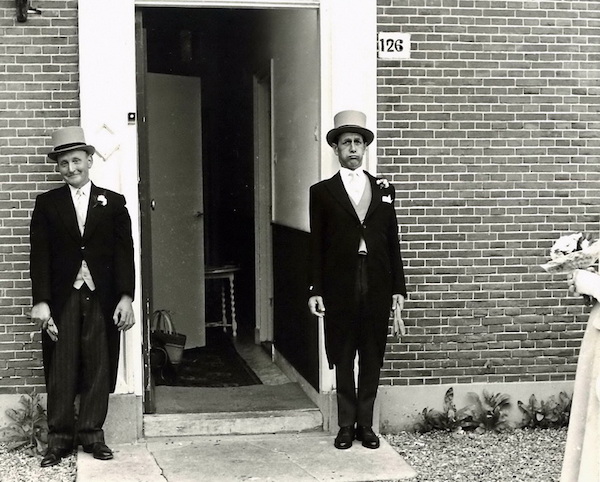
The tableau hovers between staged and spontaneous. The bride approaches, her bouquet and a sliver of her dress intruding from the left. Though she is barely in frame, she is clearly the key to the tableau. One of the suited door guardians adopts an exaggeratedly martial pose; his facial expression, formally composed, seems to communicate something almost like fear. The other, poise defeated, cracks up almost in sorrow. The suits do work; they pose their wearers, despite the different poses the wearers adopt. Through the door, we see handbags, another door, a truncated side table. Tomorrow, two of these people will have a different status, a shared future. They will face new expectations and challenges.
Take these elements and your own impression, play with the ambiguities. What struck you; what do you then imagine?
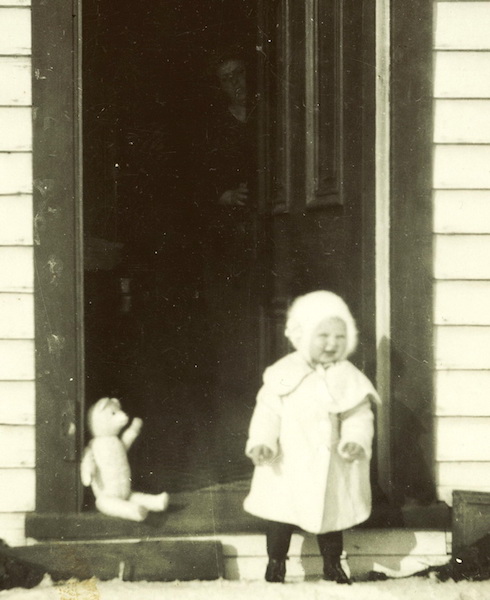
First foray, 1924. The bear, guardian of the threshold, the limen, salutes her exit; her mother hovers in shadow. Here we have multiple occasions for an interpretive studium: a transition to autonomy composed of “motherhood,” “childhood,” “first steps,” “farewell,” “worry.” Or the role of anthropomorphized toys as transitional objects; the difference between interior and exterior, or domestic and public. Elements of an evocative “moment to remember,” to record.
![]()
The visible: remainders, reversals, tricks
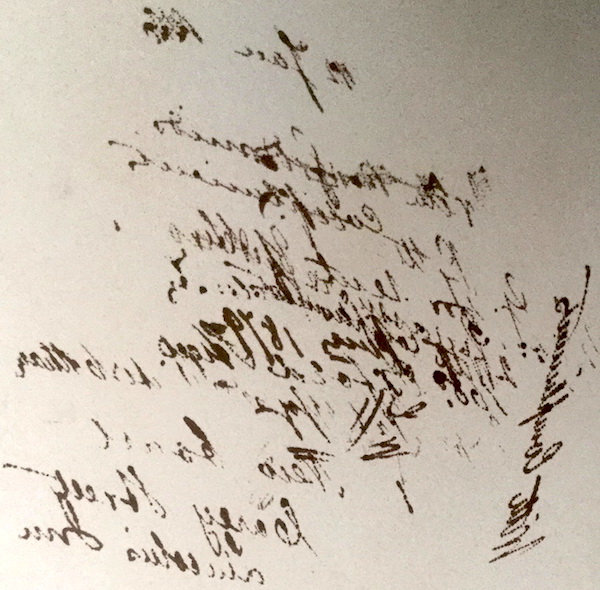
From a despatch-box blotter, used by a British consular official in the 1890s. What world, what issues, left their mirror-trace here?
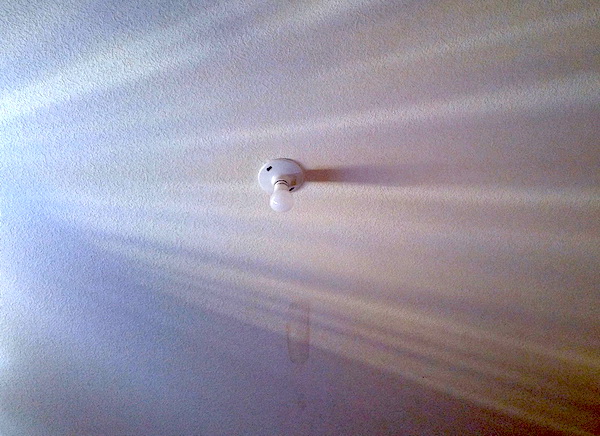
Time Away
Today, small things are giving their notice
away from the hum-drumming of traffic,
from the ceaseless traffic of accomplishment
before dinner, before too late, in or on time.
This morning’s for the notched V of light
come through parted curtains; a bare bulb
casting only shadow. For wonder at an end
or perhaps a beginning of certainty.
Today’s for recalling things to their ends,
to futures now impossible; debts unpayable;
potential spent weekly at the corner store,
the one they tore down last month.
Today’s the first tomorrow that may bear
a code for multiplying seeds, inauspicious,
heralded in numbers recited or in palliative
futures discussed in consulting offices.
Today we consider the dwindling of elders,
whose presence and capacities will diminish
day to day as expected; today let us pause
from diversion, words, hope of resolution.
Let us remember the brushing of hair,
Holding knobbed hands, taking breath
together—or across a thousand miles—
taking a stick to hand, to steady the walk.
We dress, gather, eat. Silence waits us,
and all nature with it. Today, we walk a low hill
on trails lacerated by cattle, stopping for vistas:
a tree-topped ridge, a mountain shouldering
close, an eagle’s canting circle. But I follow
the ground paced off, seeking a smooth stone
or signposts of stones, chipped, displaced,
plateaued on clay, casting shadows forward.
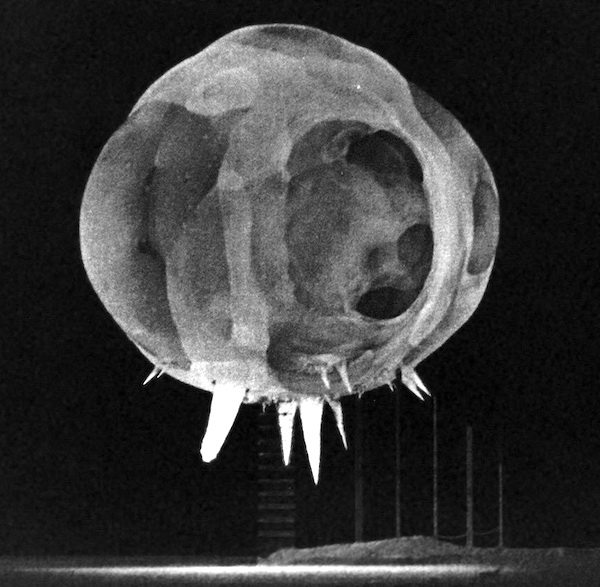
From “Advice to a Prophet”
By Richard Wilbur
“Spare us all word of the weapons, their force and range,
The long numbers that rocket the mind;
Our slow, unreckoning hearts will be left behind,
Unable to fear what is too strange.”
This image, a radiograph, was taken less than a millisecond after detonation during a nuclear test series called Tumbler-Snapper, in Nevada, 1952. Both it, and the explosion it depicts, are products of a half-millennium of learning to measure with ever more precision. It also depends on a reversal: it captures the shape of the fireball (here about 20 meters in diameter) only by being developed to represent it as not-light.
The projections extruding beneath the fireball were called “rope trick” effects, as if they were visual ruses by some cowboy magician. The row of bars beneath it is the tower on which the device was mounted. The sand beneath the tower, for about 500 meters around, will be fused into pieces of radioactive green glass called trinitite, after the so-called Trinity site where the first nuclear detonation took place.
However much they betray our un-reckoning in the face of what we have made; of the things we have made that now confront us with our own terrible awe, we cannot spare ourselves words.
We cannot but seek in the image the center of the light. We cannot but note its scattered signatures, on and in the ground. We cannot but put words to it. Even now. Even after.
![]()
References
“Barthes’s distinction between studium and punctum is much-discussed . . .”
- See, for example, two of many: Grant Faulkner, “Roland Barthes’ Camera Lucida: Absence as Presence,” http://grantfaulkner.com/2014/08/roland-barthes-camera-lucida-absence-as-presence/, and also “Walter Benjamin and Roland Barthes on Photography, and their relevance for photos found in second-hand shops,” http://www.swarthmore.edu/Humanities/pschmid1/array/instant.relatives/b+b.html.
“Reviewing Camera Lucida in 1981, Andy Grundberg wrote . . .”
- Andy Grundberg, “Death in the Photograph,” New York Times, August 23, 1981, archived at https://www.nytimes.com/1981/08/23/books/death-in-the-photograph.html. But see also Michael Fried, “Barthes Punctum,” Critical Inquiry 31 (Spring 2005)
“Water, is taught by thirst . . .”
- Emily Dickinson (ed. Thomas H. Johnson), The Poems of Emily Dickinson (Belknap, 1998), 96
“. . . and significant enough to theatre history to merit her own Wikipedia page . . .”
- See Wikipedia, “Hetty King:” https://en.m.wikipedia.org/wiki/Hetty_King
“Bucolic”
- Etymology Online, “Bucolic:” see https://www.etymonline.com/word/bucolic
“Industry”
- Etymology Online, “Industry:” https://www.etymonline.com/search?q=industry
“Today, small things are giving their notice . . .”
- By the author
“Spare us all word of the weapons, their force and range . . .”
- From Richard Wilbur, “Advice to a Prophet,” in Wilbur, Collected Poems, 1943-2004 (Harcourt, 2004). Online at https://www.poetryfoundation.org/poems/43044/advice-to-a-prophet
“This image was taken less than a millisecond after detonation . . .”
- “Operation Tumbler-Snapper,” Wikipedia: https://en.wikipedia.org/wiki/Operation_Tumbler%E2%80%93Snapper
“Both it, and the explosion it depicts, are products of a half-milennium of learning to measure . . .”
- See, Bruno Latour and Steve Woolgar, Laboratory Life: The Construction of Scientific Facts (Princeton, 1986); also, in a more popular vein, Simon Winchester, The Perfectionists: How Precision Engineers Created the Modern World (Harper, 1986)
![]()
Image Credits
Image 1.
Author photo
Image 2.
Author photo
Image 3.
The one verified photograph of Emily Dickinson, a daguerrotype taken early 1847. Original presently held by Amherst College Archives and Special Collections. Image in public domain, sourced from https://commons.wikimedia.org/wiki/File:Black-white_photograph_of_Emily_Dickinson2.png
Image 4.
Author photo
Image 5.
Author photo
Image 6.
Author photo
Image 7.
Family collection, scan courtesy of Bradley Rawlings
Image 8.
Author collection
Image 9.
Family collection, courtesy of Mrs. A. McMillan, Nanticoke ON
Image 10.
Family collection, courtesy of Mrs. A. McMillan, Nanticoke ON
Image 11.
Family collection, courtesy of Mrs. A. McMillan, Nanticoke ON
Image 12.
Author collection
Image 13.
Family collection, courtesy of Mrs. A. McMillan, Nanticoke ON
Image 14.
Family collection, courtesy of Mrs. A. McMillan, Nanticoke ON
Image 15.
Author photo
Image 16.
Author photo
Image 17.
Author collection
Image 18.
Family collection, courtesy of Mrs. A. McMillan, Nanticoke ON
Image 19.
Author photo
Image 20.
Author photo
Image 21.
Lawrence Livermore National Laboratory. Public domain. This version of the image is from Wikipedia: https://commons.wikimedia.org/wiki/File:Tumbler_Snapper_rope_tricks.jpg
